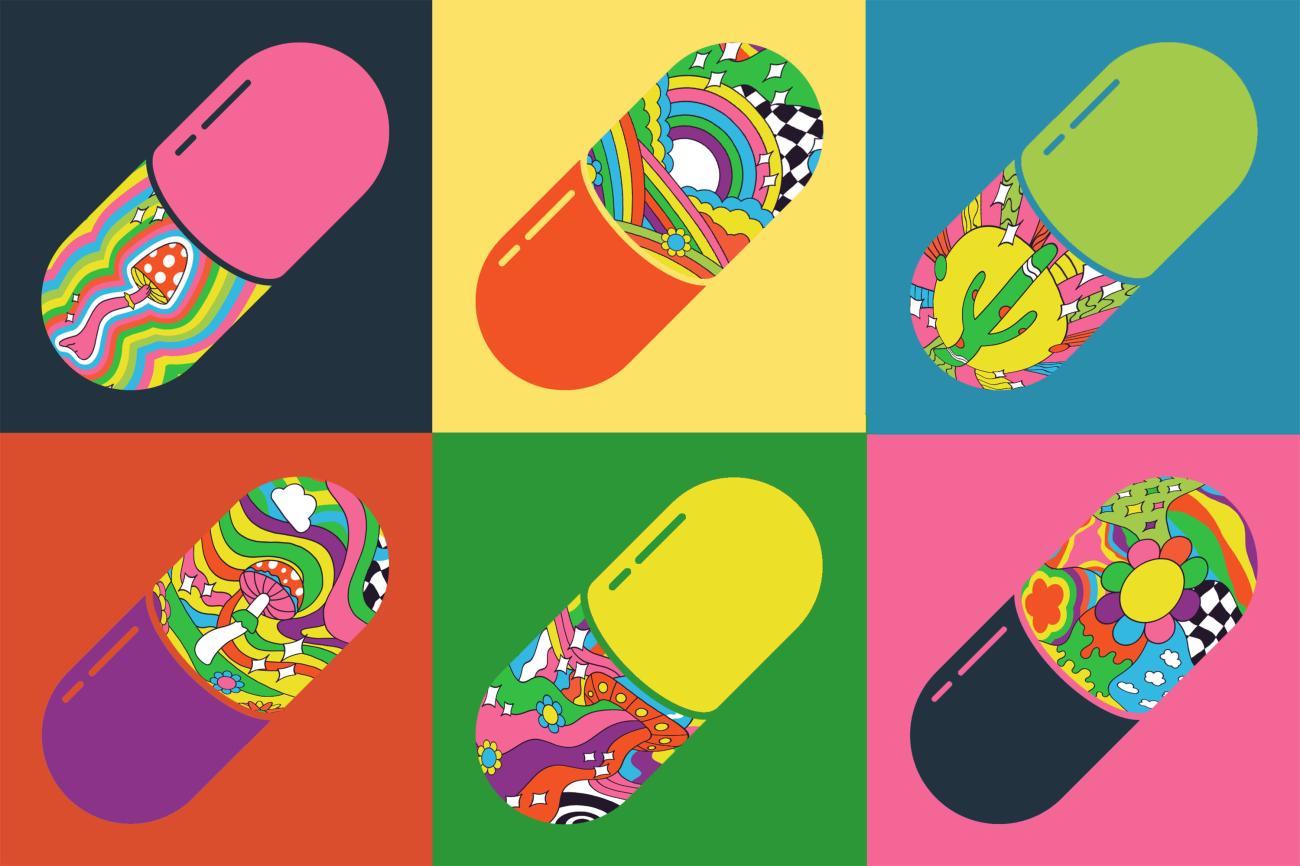Transparency builds trust in psilocybin research because it lets patients, clinicians, regulators, and investors see how decisions are made and how results were produced. Clear supply records, public methods, and open data show that a study followed rules and that the findings can be checked. This clarity reduces speculation and turns complex work into evidence that others can verify.
Public skepticism around psychedelics
Skepticism comes from three sources. The first is history. Psychedelics carry cultural baggage that colors risk perception in ways most drug classes do not. The second is method. Trials add psychotherapy, long session days, and strict handling of controlled products, which creates many moving parts that readers cannot see from an abstract. The third is confusion between medical research and nonmedical services. Headlines often blur the lines, yet the rules and documents are not the same.
Transparency answers each concern with specifics. Protocols explain endpoints and visit windows. Therapy manuals describe preparation, support, and integration. Pharmacy documents show how kits moved under lock and key. Data plans show how analysis followed predeclared steps. When these items are visible in the right format, a skeptical reader has less to question.
Public trust also grows when findings are shared with balance. Reports that place benefits and risks side by side feel honest. Safety sections that describe adverse events with timing and actions support informed debate. Plain language explanations of what a trial did and did not test help journalists and patients avoid overreach.
What transparency means in research supply chains
Supply chains carry the credibility of a study on their backs. If a site cannot prove what was given, to whom, and under what conditions, confidence collapses. Transparency in this layer rests on documents, labels, and simple controls that are easy to audit.
Certificates of analysis and release letters
Every lot should carry a certificate that names the method used to measure psilocybin and psilocin. Acceptance ranges appear next to results. A release letter ties the certificate to a shipment so hospitals know what they are receiving.
Stability and storage
Stability summaries state storage conditions and expiry periods. These files let pharmacies plan room assignments and check that visits will occur inside dating. Temperature logs from shipping and storage are saved with the intake record.
Labels and kit maps
Labels match the randomization plan. Kit maps show how cartons relate to kits and how kits relate to dose strengths. Placebo looks and weighs the same. Intake rehearsals with pilot kits catch mistakes before a production lot arrives.
Permits and shipment memos
When imports are involved, permit fields and shipment memos match line by line. The consignee name, address, and dates are identical across documents. Couriers carry a contact list with a pharmacy custodian and a backup who answers the phone.
Accountability and destruction
Sites keep a live ledger that records each handoff. Weekly checks compare expected counts to physical counts with signatures. At closeout, destruction uses a simple form with two witnesses and a certificate kept in the file.
These items are not busywork. They are the proof that the right product arrived on time and that the blind remained intact. As suppliers, we align kit maps and shipment records with hospital workflows so intake steps match documents and labels, then join mock receipts to close gaps before dosing begins.
Clear documentation and data sharing
Documentation turns a complex trial into a story that anyone can follow. Data sharing lets others check the plot. Both work best when teams use short forms and predictable formats that match how hospitals and journals read.
Protocol and manuals
A protocol sets objectives, endpoints, windows, and safety rules. Manuals lay out preparation, support, and integration with enough detail for training and supervision. Together they define the intervention, not just the molecule.
Statistical analysis plan
A dated plan written before enrollment reduces bias. It names primary and secondary endpoints, models, covariates, and handling of missing data. When the plan changes, versions capture when and why.
eCRFs and source
Electronic forms reflect session day timing and long follow up. Required fields and edit checks prevent gaps. Source notes include times, vitals, and brief narratives for adverse events. The aim is completeness without clutter.
Open materials
After publication, teams can post redacted COA formats, stability outlines, therapist rubrics, and intake checklists. De identified datasets with a data dictionary and code that reproduces figures let peers re run models and test sensitivity.
Interlab comparisons
Before first shipment, site labs run a comparison against supplier methods for psilocybin and psilocin. Passing results sit in the binder near the COA. This step prevents chemistry disputes late in a study.
Good documentation reduces time in review. Clear materials answer questions before they are asked. Monitors find records without hunting. Auditors trace a kit from release to destruction in minutes. Readers outside the trial can judge reliability without guessing at hidden steps.
How transparency reassures regulators and investors
Regulators and investors both read for risk. They want signs that a team knows its limits and runs a tight file. Transparency gives those signs in ways that do not depend on trust alone.
For regulators
Transparent trials show predeclared endpoints and follow them. They report adverse events with timing and actions, not just counts. They keep therapy manuals in the file so reviewers can see what support was delivered. They document the blind. They prove that site labs can reproduce assays. They maintain secure storage with named staff, access lists, and daily checks. When a reviewer opens the binder, the order makes sense.
For investors
Transparent companies link spending to milestones that matter. They share a calendar from inquiry to first patient and a plan for permits, labels, mock intake, and therapist staffing. They release data that stand up to reanalysis. They publish retention rates for sites and repeat orders for suppliers. They admit delays with a brief root cause and a fix. Capital rewards that discipline because it lowers the chance of surprises that wreck timelines.
A shared theme runs through both audiences. People look for habits. Do teams rehearse intake with pilot kits. Do they keep backups for therapists and pharmacists. Do they use the same label sets and kit maps across sites. Do they post code that regenerates figures. Habits predict outcomes better than slogans.
Case examples of credibility building
Credibility grows in small steps that others can copy. The most effective examples are simple and repeatable across hospitals and sponsors.
Mock intake with audit ready forms
A hospital runs a one hour drill with pilot kits. Staff practice seal checks, label verification, kit logging, and temperature file downloads. They use the same forms planned for the study. The team catches a barcode mismatch and a missing suite number on a delivery address. Both are fixed before the production lot ships. Startup losses do not occur, and the first session day stays on the calendar.
Interlab agreement before dosing
A site lab compares its LC MS method against the supplier for both psilocybin and psilocin. The first run misses acceptance ranges for psilocin due to a solvent difference. The labs align on standards and run again. Passing results are filed. During inspection the chemistry section moves quickly because the proof is dated before the first shipment.
Public analysis code for a primary endpoint
A sponsor posts a notebook that regenerates the main figure from raw data and a data dictionary. Readers re run the model and confirm the result. A journal invites a commentary that discusses method limits and generalizability. The conversation centers on data, not on trust in the sponsor.
Therapist fidelity checks with short rubrics
A multisite trial uses a two page rubric for preparation, support, and integration. Supervisors score a sample of sessions each month. Drift at one site appears in the support phase. The team runs a booster training. Endpoint variance narrows in later enrollees. When asked how the team kept practice uniform, the sponsor points to the rubric, scores, and retraining log.
Clear language to separate trials from services
An academic center publishes a page that explains how FDA trials differ from state service programs. Consent forms, storage, blinding, and safety oversight are described in plain words. Media stories become clearer. Incoming participants arrive with better expectations. IRB staff report fewer calls about basic rules.
Each case builds trust without fanfare. Documents, drills, and short tools do the work. Readers who want proof can see it. Teams that want to copy the method have a template to start with.
Trust as the key to scaling research
Large studies need many sites, many therapists, and many handoffs. Trust is the lubricant that lets this machine run without grinding. It is not blind faith. It is confidence earned by visible habits and records that reconcile.
Scaling starts with a shared playbook. Binder maps, label templates, kit maps, intake checklists, therapist rubrics, and eCRF visit schedules should look the same in Boston, Worcester, and partner sites in other states. When people change jobs or hospitals add a new unit, the tools feel familiar and work the same way.
Scaling also requires steady communication. Short debriefs after intake, session days, and audits keep teams honest. Publishing the revised checklist after a fix signals that learning is active. Posting de identified datasets with code signals that analysis can be checked. Sharing interlab results signals that chemistry is under control in more than one building.
Finally, scaling depends on clear roles. Suppliers publish COAs, stability files, and shipment memos that mirror permits. Hospitals maintain tight storage, accurate intake, and clean reconciliation. CROs watch timing, deviations, and data quality with dashboards that flag drift. Journals and funders reward teams that publish methods and share data. Each partner adds a piece of the same transparency picture.
Trust does not come from glossy language. It comes from a receipt log with the right date, from a temperature file that matches a shipping window, from a label that protects the blind, and from a figure that any reader can regenerate. Psilocybin research will move faster, and with less controversy, when those pieces are easy to see.




